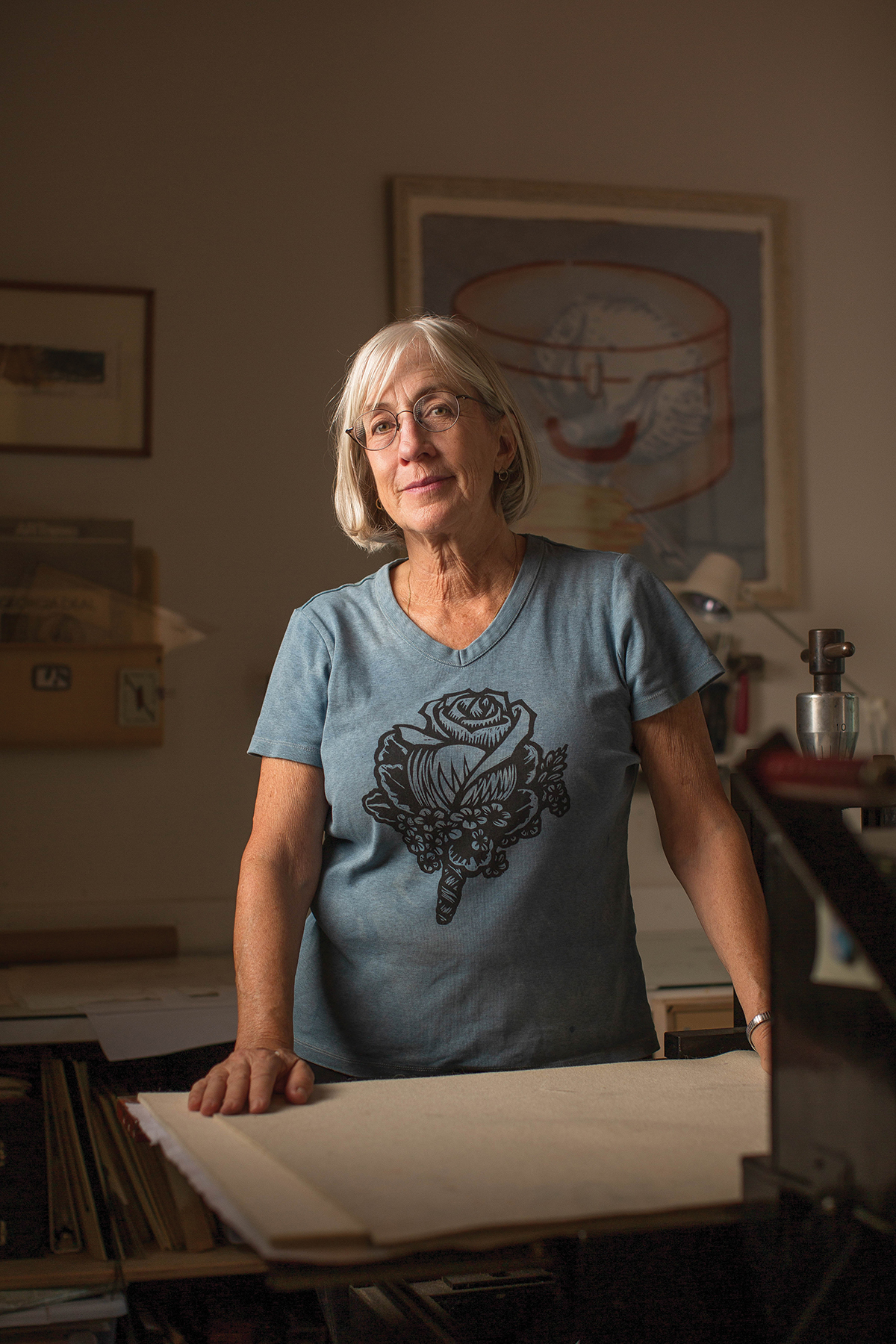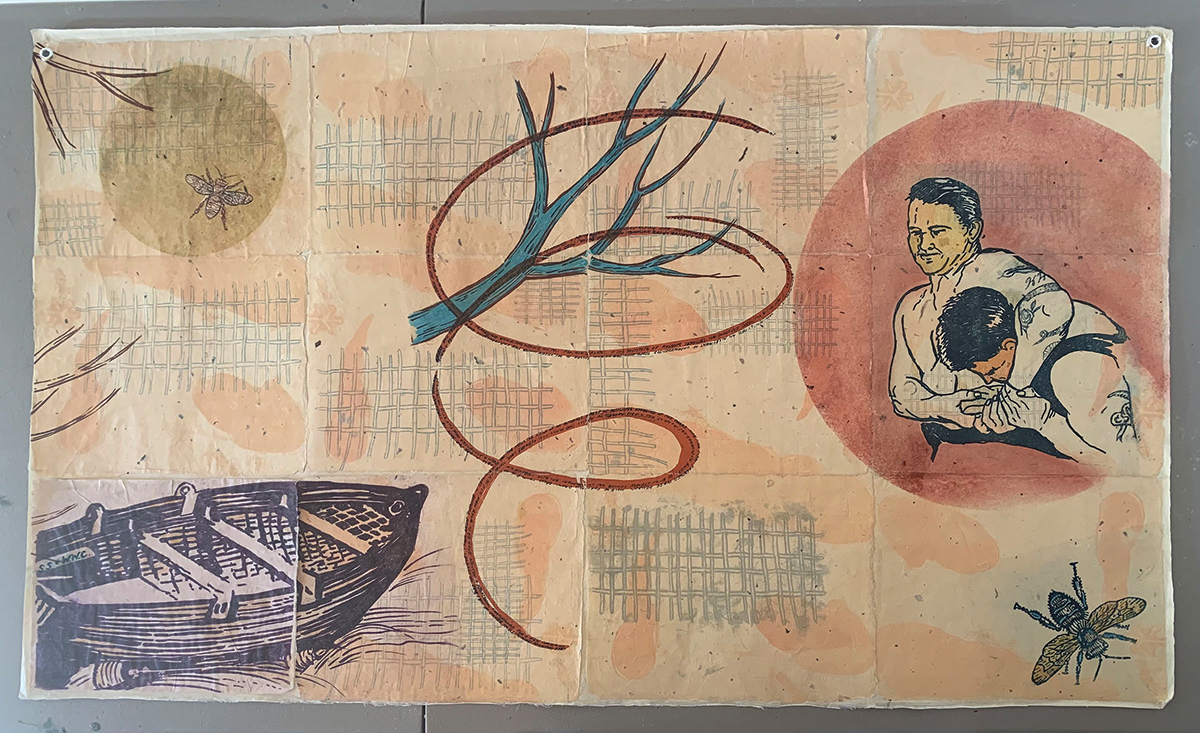
Portrait by Colby Rabon
Printmaking isn’t an art form that flourishes in solitude. “It’s a very social practice,” says Georgia Deal, “with people who like to be in a studio together and talk and exchange ideas.”
That idea exchange has been integral to Deal’s work in museum schools spanning more than four decades. In the late ’70s, the Smithsonian American Art Museum in Washington, DC, had a program that invited gifted students from high schools across the district to come in for a month of intensive print courses led by Deal, who was then artist in residence (she’d been invited by renowned printmaker Alan Kaneshiro).

Deal was also involved with exhibit-related programs. One show, More Than Land or Sky: Art from Appalachia, piqued her interest in papermaking. “I got to bring all these papermakers to the Smithsonian, but we had no papermaking equipment,” she recalls. “I reached out to the Institute of Paper Chemistry in Appleton, Wisconsin, and they sent down everything I needed to set up a paper-making studio. It was heaven.”
It was a crash landing, on the other hand, when the Smithsonian ended the program and put all the equipment into storage. When the Corcoran College of Art + Design offered Deal a position as printmaking chair, she took it under the condition that they introduce a papermaking program. At her urging, the Smithsonian gave their stored equipment to the Corcoran, and Deal remained at the Corcoran for 33 years.

Just as printmaking began to diversify in the late ’70s, papermaking has moved in more experimental directions. “We hosted workshops that made imagery in pulp that seemed very much like printmaking, and so the paper was a print in itself,” explains Deal. A sabbatical allowed her to explore and refine those techniques, and eventually, she merged the two. “[With] paper you can only do so much; it kind of has a soft, diffused look. What I really liked was adding print techniques over it when they were dry, to further develop an image.

“So there was combination — and that’s more what I’m doing now, a combination of processes.”
The muted jewel tones of Deal’s handmade paper — antique rose, faded gold, marine blue — are overlaid with imagery that often offers droll commentary but never departs from an atmosphere of retro sophistication.
Deal and her husband, the conceptual sculptor Tom Ashcraft, moved to Asheville when Ashcraft accepted a position directing the MFA program in studio art at Western Carolina University. They renovated a ranch home to accommodate her studio, Swannanoa Paper, where Deal conducts papermaking workshops.

“It’s an exciting time in Asheville,” she says. “There are a lot of good printmakers coming in. I would love to do collaborative workshops where people start with me to make paper, and then go on to a printmaker.”
Georgia Deal, Asheville, georgiadeal.com. The artist teaches workshops at Swannanoa Paper (20 Evergreen Ave. in Asheville) and is a member of Asheville Printmakers (ashevilleprintmakers.org). Deal is represented by Tracey Morgan Gallery (188 Coxe Ave., Asheville), where her event Uncharted — a joint exhibit with her husband Tom Ashcraft — will run through Saturday, Oct. 29 . For more information, see traceymorgangallery.com.
So “brave.” LOL.